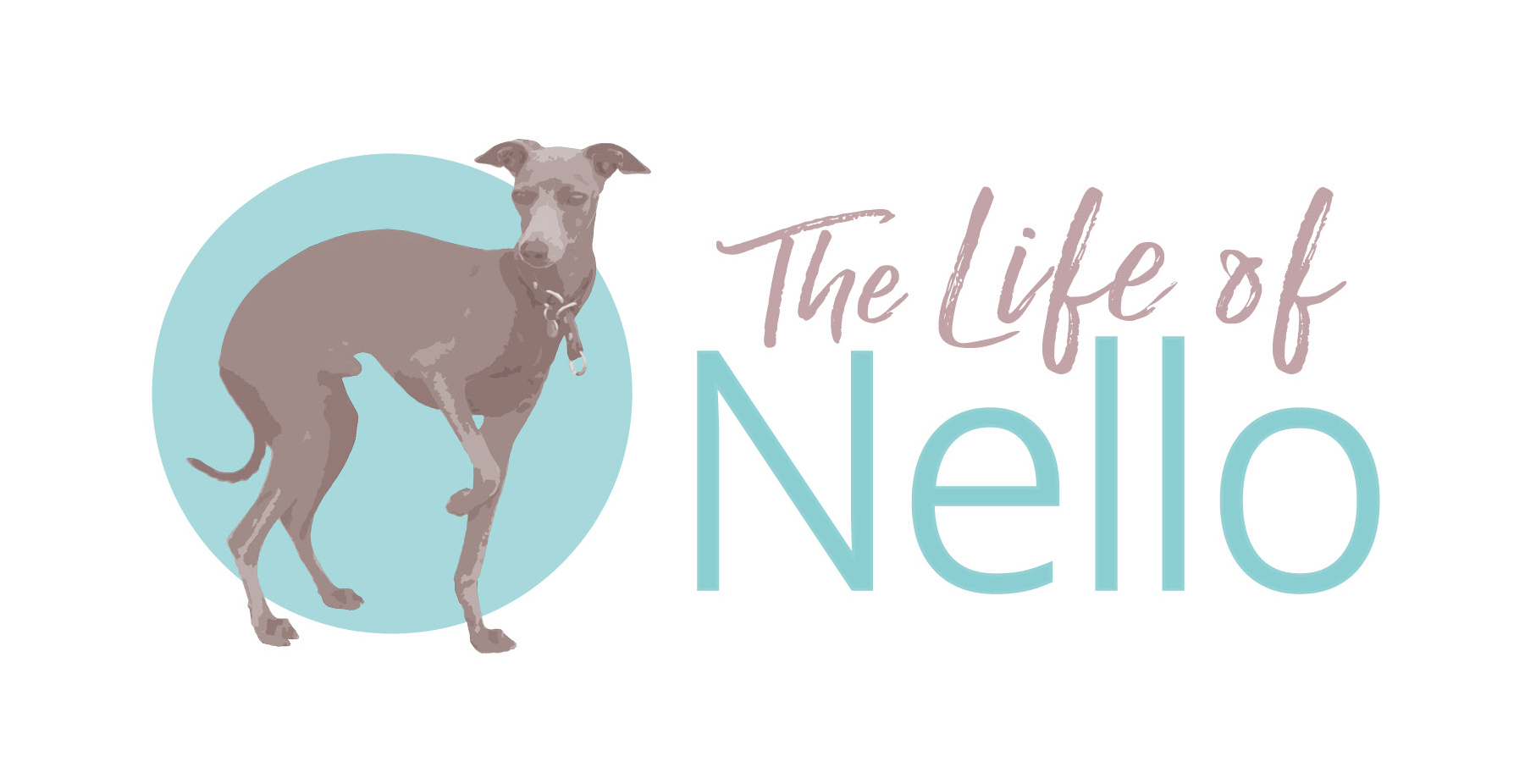Finding the right food for your Iggy is not an easy easy task. It should be healthy, nutritious and of course yummy. You want your dog to have the best! But what is really the best for them?
In this post we’ll have a closer look at the different options. What’s good or bad about them, what is important when choosing a food brand and how do you know the food is not good for your Iggy? You’ll find answers on these questions and many more here!
What Kind of Food Options Are There?
There are lots of different kinds of foods available on the market.
Italian Greyhound Food #1: Dry Food / Kibble
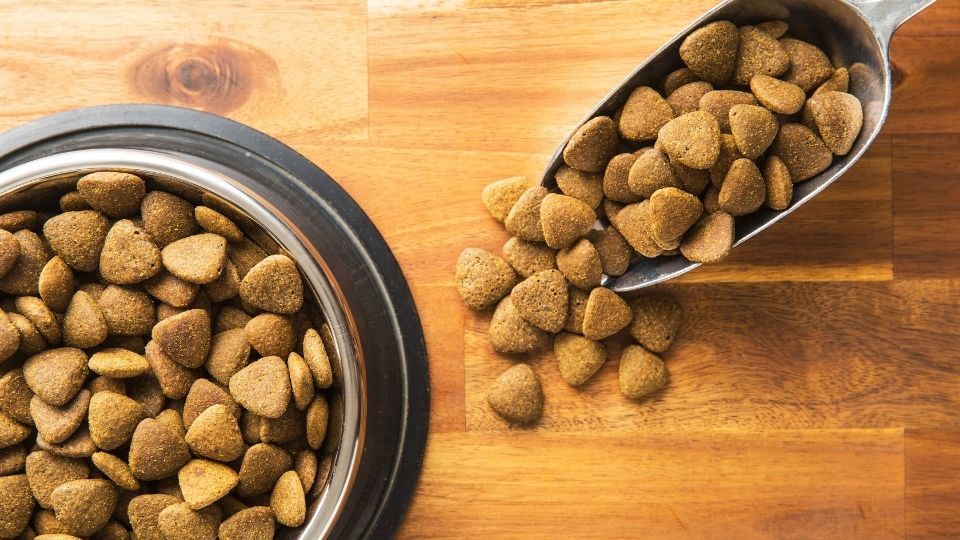
Dry food is quite convenient as it’s easy to portion and doesn’t smell bad. Another benefit: You can easily take it anywhere you go. Problem: There aren’t very many high quality options out there, it’s quite processed and it will make your dog very thirsty.
Italian Greyhound Food #2: Wet / Canned Food
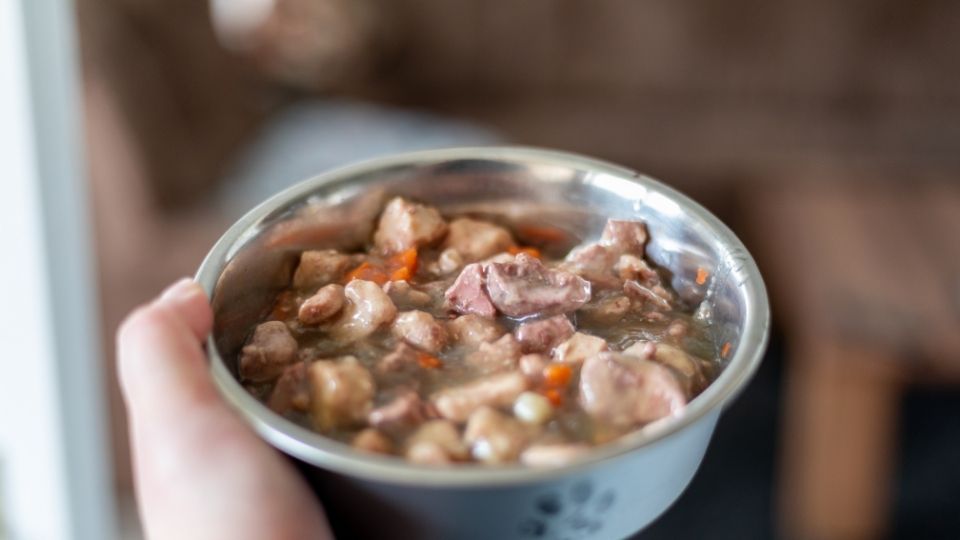
Wet or canned food is easy to eat and digest, especially for elderly dogs who have lost some of their teeth (read this to find out how to prevent that!). It’s easy to digest and keeps your dog well hydrated. It’s more likely to cause a stinky breath and bad teeth.
Italian Greyhound Food #3: Raw Food / Home Cooked
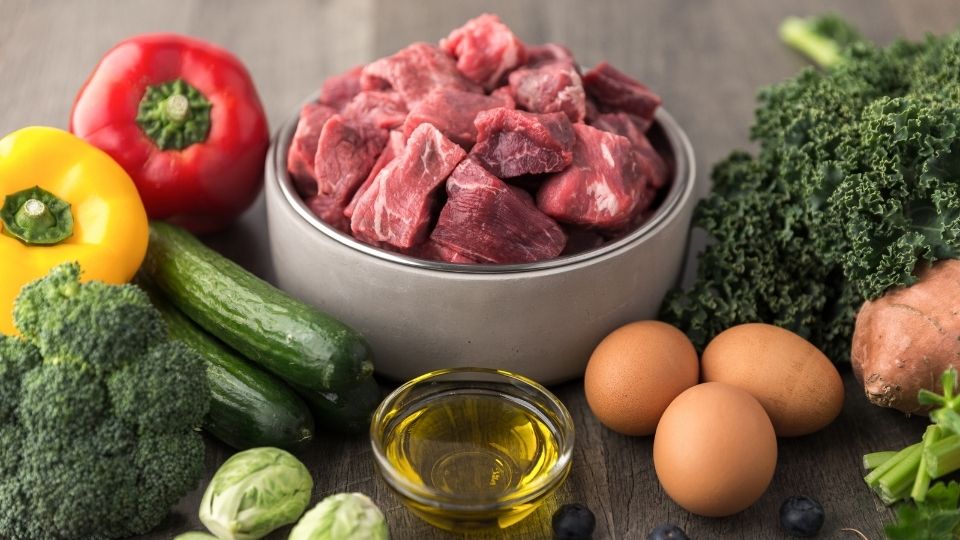
The good thing with raw food or home cooked food is that you know exactly what’s in it, you can decide on the quality of the ingredients used and you can create a special meal your dog likes. The problem here is that you will really have to read into the topic of dog nutrition as there is so much that can go wrong. If the diet is not well balanced, your dog can get seriously ill. So this is not for beginners!
What’s Important When Choosing Food for Your Italian Greyhound? 3 Things to Look Out For!
After all, every dog has individual needs and such a thing as “the best” dog food does not exist. It will be a matter of trial and error to see what your dog likes and what is good for them.
But as the food you are feeding will actively influence your Italian Greyhound’s health, there a a few things to look out for:
- Open declaration – Check the ingredients label! A high quality dog food brand will tell you the exact composition so you know what’s in it, for example “60% lamb (meat, heart, lung, liver), 15,6 % broth, 9% potatoes, 5% carrots” and so on. Avoid brands that will only tell you they contain “meat” without telling you exactly what it is.
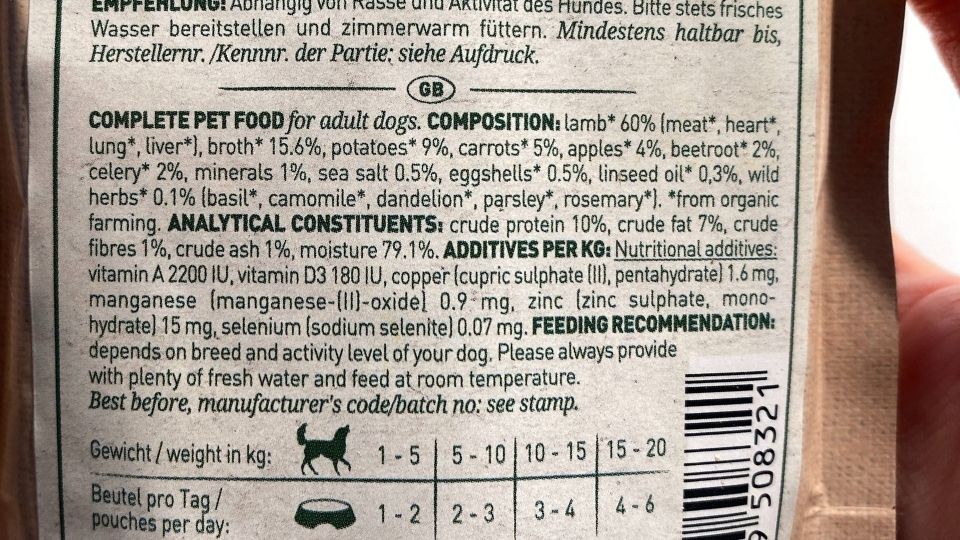
- High quality ingredients – A good brand will always contain a high amount of high quality protein. Avoid buying dog food at the grocery store, as they mostly sell brands that consist of “byproduct”, cheap fillers and sugar.
- Well balanced – Make sure the food you are feeding is well balanced. Therefore it should contain proteins (any meat sources), carbs (for example rice or potatoes) and fats (oil).
If you decide to switch to another food kind or brand, slowly transition from one to another. Some dogs might get stomach problems when switching right away. Take around 7 to 10 days for this transition.
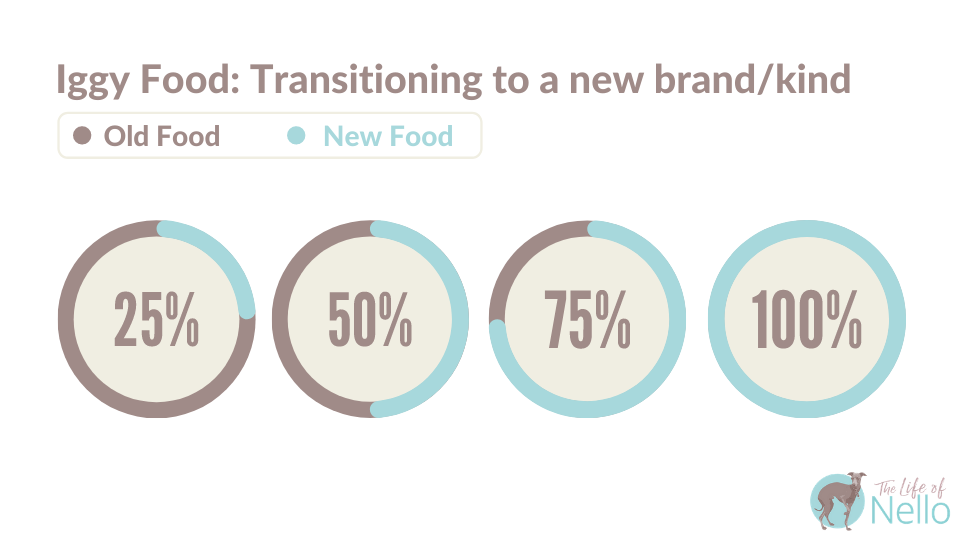
How Much Should You Feed Your Italian Greyhound?
There is no general answer on how much you should feed your Iggy, as it depends on various factors such as
- activity level
- size of your Iggy
- whether they are neutered or not
- brand / kind of food
When they are still a puppy you really can’t feed them too much. So don’t stress about it too much and just feed them the recommended amount. If they are still asking for more, increase the amount a bit the next time!
When they get older you might have to restrict calorie intake a little bit more. But again, don’t stress about it too much. Just look at their physique and how it’s changing – if they are too skinny, feed more. If they are a bit chubby, feed less. It’s as simple as that!
But also keep in mind that just how it is with humans, dogs have different body types. Some will always be a little more on the skinny side, while others are more muscular built and therefore will always look bulkier.
Some Iggies also take some time to really fill in. So before they are 3 years old you really can’t say what kind of body type they really are because they might not be fully “grown” yet.
Food Related Problems Your IG Might Have
Often times Iggies are either very picky eaters or the opposite.
How to Handle a Picky Italian Greyhound
We were told a dog will never die of starvation with a bowl of food in front of them. So people sometimes recommend just to wait because the dog will start eating eventually.
Turns out: Iggies are different and they will wait until you get something different. Trust us, we’ve tried. And as they are already so skinny, you just can’t watch your dog starve for weeks.
Here are a few tips that can work if you have a picky eater:
- Switch up the kind of food – For example by changing the brand, changing the protein source, changing the consistency (for example from wet to dry food) will help to keep things interesting for your Iggy.
- Add toppings – Sometimes it helps to add treats on top of their food to get them started. Once they get started, it’s quite likely they will eat everything else, too.
- Strict routine – For some dogs, it can be helpful to have a fixed feeding schedule. If they don’t eat up wait around 10 minutes and take away their food bowl until it’s time for the next meal. This will help reinforce the idea that your Iggy won’t be finding any food until the next meal time. Don’t leave it up to the dog to decide when it’s time for food! Leaving the bowl available at all times will only make food less special and therefore also less desirable for them.
- Make it fun – Try to make eating more fun. If you’re feeding kibble, you can toss it and make the dog run after it or you can hide it in a snuffle mat.
How to Handle an Italian Greyhound That’s Always Hungry
Especially after they were neutered, weight management is very important as neutered dogs won’t burn as much calories as they used to.
- Buy a slow feeder – There are special bowls available with little pillars in them that the dog has to eat around. This way, they have no other option but to eat slow.
- High volume food – Add low calorie foods like vegetables to your dog’s meals to increase the overall amount of food.
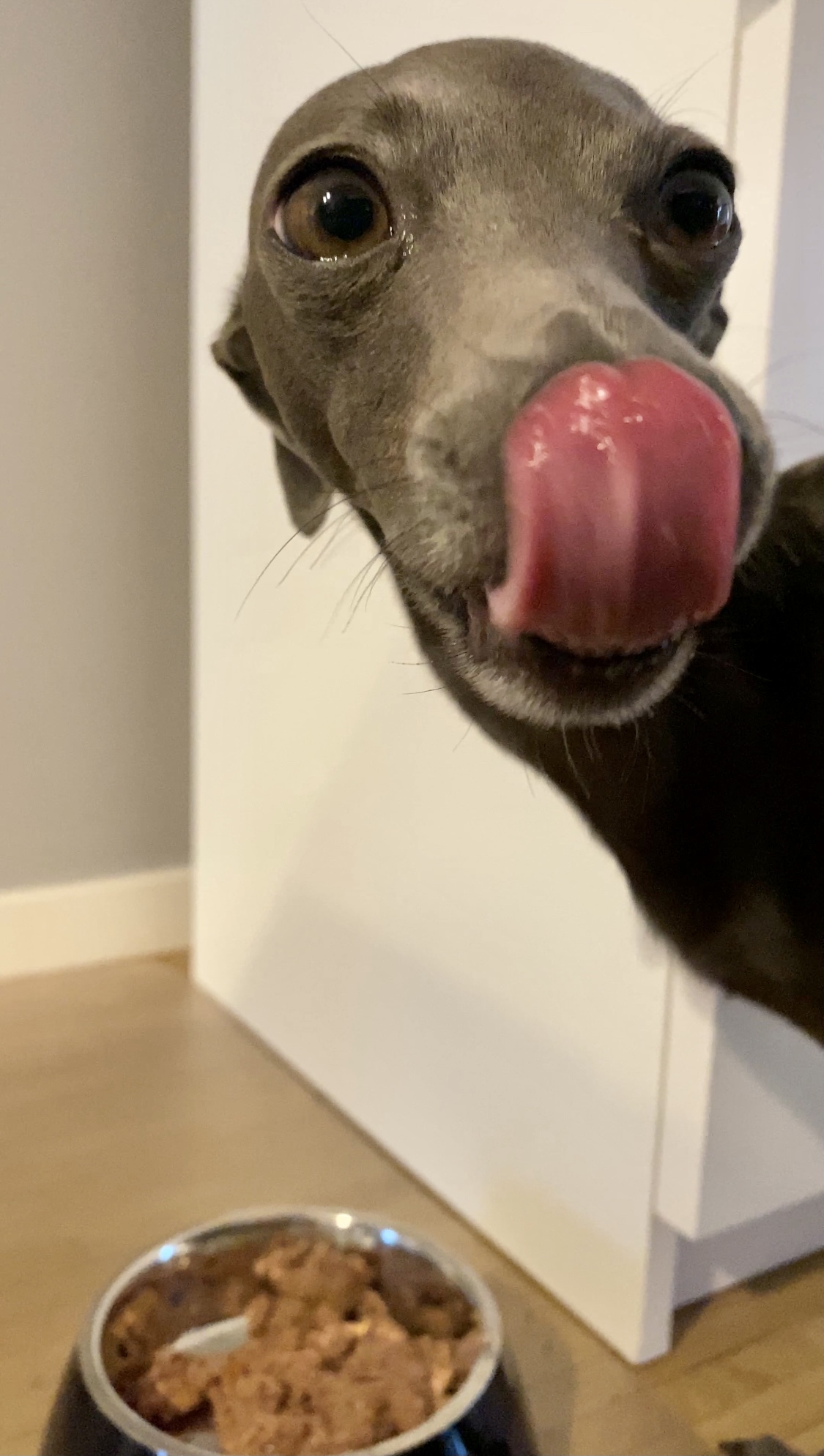
How Do You Know the Food is Not Good for Your Italian Greyhound?
But when is it definitely time to look for an alternative?
- Allergies – When your Iggy has flaky or itchy skin or diarrhea or a long time, it may be caused by the food. In this case it makes sense to try out a different kind.
- Hair loss – Sometimes hair loss may be caused by food intolerances.
- Weight loss – Food that can’t be digested well may also cause weight loss in dogs.
Conclusion on Italian Greyhound Food – High Quality Food for Your Dog’s Health!
The food you are feeding your Italian Greyhound will have a huge impact on their health and overall wellbeing. Which type of food is best for your dog is very individual. Just try out different kinds and choose the type works best for your Italian Greyhound.
